The best Wi-Fi 6 routers 2024: top Wi-Fi 6 and 6E routers
The best Wi-Fi 6 routers have arrived
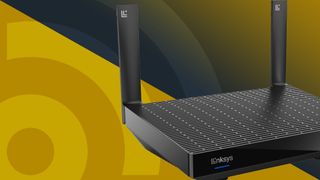
It’s time to upgrade to the best Wi-Fi 6 router if you’ve been roughing it on your Wi-Fi connectivity with an older device. Although Wi-Fi 7 devices are slowly trickling in, including some gaming laptops and a few routers, Wi-Fi 6 is still very much the current standard, and it will take a while before most people are going to adopt its successor. And if you haven’t gotten a Wi-Fi 6 router, now’s the time to do it.
With so much of our lives these days relying on being connected online, there’s no excuse for sticking with a slow and aging router. That’s whether you’re working from home and need a fast internet connection or you’ve got a household full of devices. And unless you live in the woods and staying off-grid, the best wireless router for you is the one that allows you to make the most of Wi-Fi 6 technology.
These days, middling internet speeds are inexcusable, especially with all the smartphones, tablets, Ultrabooks, and smart home devices we use at home or in the office. With a reliable and robust Wi-Fi 6 or even Wi-Fi 6E router, your internet signal will experience a boost in speed, which will not mean faster internet but a stronger, uninterrupted signal to every device and computer connected to your network.
We've tested our share of routers, putting them through their paces to help you find the perfect one to cover your space. And, we've gathered our top choices here, including some of the best Asus routers as well as the best mesh Wi-Fi routers that are perfect for larger spaces.
The best Wi-Fi 6 routers 2024
Why you can trust TechRadar

Specifications
Reasons to buy
Reasons to avoid
The Linksys Hydra Pro 6 is an affordable Wi-Fi 6 router that is ideal for regular users who aren't quick tech-savvy. It isn't the most robust option on the market, but it provides strong Wi-Fi performance and good coverage to satisfy the average household. During testing, it allowed us to achieve the maximum 100Mbps available from our broadband service, and up to 12.5MB/s downloads from Steam.
Better yet, it's incredibly easy to setup, thanks in large part to the basic Linksys app that automatically creates a single network that combines the 2.4GHz and 5.0GHz bands and provides an overview of all the connected devices. Because it is more stripped down, there aren't a lot of extra frills or customizations to enjoy here. However, its affordable price more than makes up for that. Besides, most households do not require those anyway.
Read the full Linksys Hydra Pro 6 review
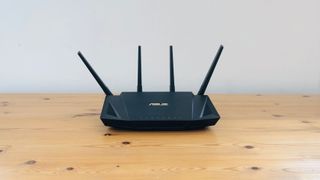
Specifications
Reasons to buy
Reasons to avoid
There are some excellent Wi-Fi 6 routers coming to market. Unfortunately, quite a few are just way too much for most homes, not to mention too expensive. Enter the Asus RT-AX58U. It brings Wi-Fi 6 into your home at a fantastic price, with just enough features to keep most small to medium home networks at the top of their game.
The RT-AX58U is way faster than most home broadband services, and will be ideal for gaming, streaming video and music. It delivered impressive performance during our testing. When used in the same room as our existing 802.11ac router, it managed to squeeze a little extra speed, increasing our Wi-Fi speeds from 55Mbps to 59Mbps. So, while it might not have the port selection or gaming features that it’s big brother, the RT-AX86U, has, it does offer the same parental controls as well as excellent Wi-Fi 6 support.
Read the full Asus RT-AX58U review
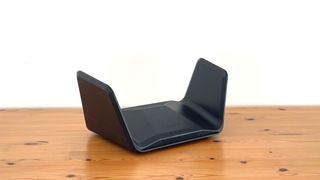
Specifications
Reasons to buy
Reasons to avoid
The Netgear Nighthawk RAXE300 tri-band Wi-Fi 6E delivers impressive speed, making it a fantastic Wi-Fi 6 router to handle large numbers of devices all at the same time. It uses three frequency bands - 2.4GHz, 50GHz, and 60GHz - to provide total speeds of up to 7.8Gbps, which is fast enough for gaming, 4K or 8K video, or prancing around with a VR headset.
On test, it delivered impressive performance and a good range, providing fast Wi-Fi even in the back office of our building, which is normally something of a Wi-Fi dead zone. Sadly, the app attempts to sell you additional subscriptions to fill in for some of its missing features like parental controls. So, unless you're willing to pay, there are no scheduling features or content filters to block unsuitable web sites. However, it is very easy to use and comes with multiple high-speed Ethernet ports for wired connections.
Read our full Netgear Nighthawk RAXE300 review

Specifications
Reasons to buy
Reasons to avoid
A competitively priced Wi-Fi 6 router for gamers, the Asus TUF Gaming AX5400 looks every bit like a gaming router, with a chunky, angular design and an array of six separate antennae. It also comes with four additional Gigabit Ethernet LAN ports to provide a lag-free wired connection for PCs or gaming consoles. One of them is also designated as the ‘gaming port,' taking priority over the other ports for the highest possible speed.
Naturally, you're getting strong wi-fi performance and high-speed wired connections as well. On test, it handled Steam downloads and gaming sessions on our 100Mbps office broadband service effortlessly and comfortably maintaining 100Mbps in the Ookla test and 12.5Mbps on both the 2.4GHz and 5.0GHz bands in typically harder to reach areas of our space. Plus, good parental controls also mean that it’s a good choice for households with kids too.
Read our full Asus TUF Gaming AX5400 review
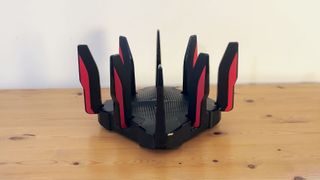
Specifications
Reasons to buy
Reasons to avoid
There may be a few things you might not like about the TP-Link Archer GX90. It’s big, it’s bulky, and it’s expensive. However, those are easy to forgive when you realize that you’re getting a big bang for your buck. Performance-wise, all three bands recorded strong performance with the Ookla speed test, hitting 100Mbps download and 11Mbps upload for devices located in the same room during our testing.
This is also among the best Wi-Fi 6 routers out there in terms of features, boasting a handful of features for hard-core gamers. That includes a dedicated 5GHz ‘gaming band’ that lets you hog most of your household bandwidth when you need it. Have younger gamers at home? It also provides good parental controls like content filters to block unsuitable material, with pre-set profiles for children of different ages.
Read the full TP-Link Archer GX90 review
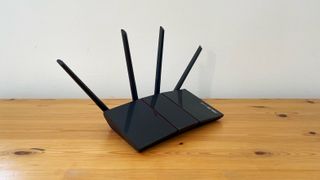
Specifications
Reasons to buy
Reasons to avoid
The Asus RT-AX55 fits the bill nicely if need a low-cost Wi-Fi 6 router that can update your network, as it provides a good upgrade for the aging Wi-Fi router in our office. It not only reaches speeds of 100Mbps in the Ookla speed test and 12.5MB/s for Steam downloads, the fastest speeds supported by our office broadband connection during testing. But, it also offers better range, giving you better coverage throughout your space.
The Asus app is also easy to use, whilst also providing more advanced features for users who want more control over their network configuration. But, if you want more options to control, it also has a web browser interface will appeal to more experienced users who need more than the basic features provided by the app. It also boasts a sleek, with a streamlined black casing and go-faster red stripes that makes it look pricier than it is.
Read our full Asus RT-AX55 review
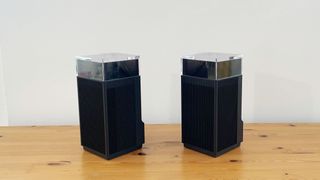
Specifications
Reasons to buy
Reasons to avoid
A top-of-the-range Wi-Fi 6E mesh system for larger homes and offices, the Asus ZenWiFi Pro ET12 may be a massive overkill for the majority of router users. However, it's exactly what a handful of users need if they're covering a large space and need top-of-the-line performance.
A single ET1 router can cover homes of up to 3,000 sq. ft, while the two-piece system covers 6,000 sq. ft. As well as supporting tri-band Wi-Fi 6E, it also provides a top speed of 11Gbps. On test, the second ET12 allowed us to maintain maximum speeds and eliminate our Wi-Fi dead spots in our space.
Not everyone will need that sort of speed or wide coverage for their home broadband. However, if you’ve got your eye on a new smartphone or laptop that supports Wi-Fi 6E and a massive area to cover, it makes sense to opt for this future-proof mesh system.
Read our full Asus ZenWiFi Pro ET12 review

Specifications
Reasons to buy
Reasons to avoid
The Devolo Magic 2 WiFi 6 Mesh combines PowerLine wired connectivity with a mesh system so that no thick brick walls and amount of space can limit your network access. It's not particularly fast – only supporting dual-band Wi-Fi 6 with a top speed of 1800Mbps. However, it should more than adequate for most home broadband needs, especially if your focus is on reliability rather than sheer speed. During our testing, it breezed along at 110Mbps when using the Ookla Speed Test app, and a rock-steady 12.5MB/s for Steam downloads.
The three adaptors in the Devolo Magic 2 WiFi 6 Mesh's home kit are fairly chunky, more than twice the size of a normal 3-pin plug, but since they're designed to be plugged into sockets, they should stay out of the way. If you've got thick walls or other obstructions that can block the Wi-Fi signal or a larger home with bedrooms spread over two or three stories, this might be the best Wi-Fi 6 router for you.
Read our full Devolo Magic 2 review
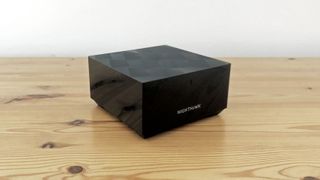
Specifications
Reasons to buy
Reasons to avoid
Larger homes need more robust solutions, and while the Netgear Nighthawk MK63 might be an overkill for smaller homes, it’s just the ticket if you have a space of up to 3500 sq.ft and need an extremely reliable network for gaming and 4K video. On test, it easily handled the full speed of our 50Mbps Internet connection, nudging it up to 58.9Mbps for download speeds, and maintained a steady download speed of 58.4Mbps in our back office where the wifi is normally unreliable.
There are some neat features you’re getting here as well, including the ability to create a guest network and a network map for monitoring all devices connected to your network. There are no parental controls, however, and as long as you can live with that and the high price tag, this might be the best Wi-Fi 6 router for you.
Read the full Netgear Nighthawk MK63 review

Specifications
Reasons to buy
Reasons to avoid
The Netgear Orbi Quad-Band WiFi 6E may only be suitable for very large homes with 6E supporting devices. It's very expensive, which means you absolutely do need to fully utilize all that speed and Wi-Fi prowess. However, it's well worth the money if it's exactly what your space needs, providing incredible performance, giving us maximum Wi-Fi speeds throughout our space during testing.
Surprisingly, the Orbi app does at least deserve credit for being easy to use. However, if you want Netgear’s Smart Parental Controls and Armour security services, to name a few special features, you'll have to pay additional subscription fees, making the whole thing all the more expensive.
If it wasn't for the price, the Netgear Orbi Quad-Band WiFi 6E would be higher up our list. But, if you can afford it, this is certainly one of the most powerful Wi-Fi 6 routers on the market today.
Read our full Netgear Orbi Quad-Band WiFi 6E review
Should I buy a Wi-Fi 6 router?
Operating over 2.4GHz and 5GHz frequency bands, Wi-Fi 6 delivers a faster connection and much better performance than its predecessor. Upgrading to a Wi-Fi 6 router, therefore, will give your network a significant boost.
That isn’t all Wi-Fi 6 does, however. Besides that uptick in speed, Wi-Fi 6 routers also offer better support for crowded environments – that means networks to which several PCs, mobile devices, smart home devices, and Internet of Things are connected. They are much better equipped to handle multi-device households, offices, and other areas, which – let’s face it – are most spaces these days.
This means that a Wi-Fi 6 router allows for larger amounts of data to be transferred all at once without worrying about overwhelming your network and experiencing slowdowns.
Still, even if your network isn’t congested with devices and traffic, it’s still a wise choice to buy a Wi-Fi 6 router. More and more devices are coming out with Wi-Fi 6 support, and you’ll have to get one just to stay up to speed.
How we test Wi-Fi 6 routers
Because Wi-Fi 6 is a new wireless technology, we have to do things a bit differently. Still, doing so is very similar to testing non-Wi-Fi 6 routers, and we take it just as seriously as we do the other.
We take a look at the design first, naturally. We make sure that there are enough ports for wired connectivity, see just how easy (or hard) initial setup is, and check that the overall look doesn’t turn off the target market.
Because some Wi-Fi 6 routers are mesh routers, we determine whether or not they have the type of aesthetic that will blend well into any space. Having several routers spread around your home or office, after all, isn’t exactly something to easily miss.
We then move on to performance. We check the range and strength of coverage, perform the usual Ookla speed and file download tests, and of course, test them against real-world scenarios like having multiple devices connected at once.
We then take all that information we’ve collected from each router we test and set it against the price to determine whether or not the router is a great value to consumers. That’s when we finally decide whether or not it’s worth our recommendation.
Get daily insight, inspiration and deals in your inbox
Get the hottest deals available in your inbox plus news, reviews, opinion, analysis and more from the TechRadar team.

Michelle Rae Uy is the former Computing Reviews and Buying Guides Editor at TechRadar. She's a Los Angeles-based tech, travel and lifestyle writer covering a wide range of topics, from computing to the latest in green commutes to the best hiking trails. She's an ambivert who enjoys communing with nature and traveling for months at a time just as much as watching movies and playing sim games at home. That also means that she has a lot more avenues to explore in terms of understanding how tech can improve the different aspects of our lives.
